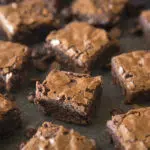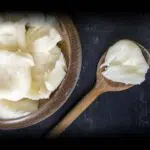Lard Day is celebrated every December 8. After being shunned for decades, lard is now resurging as a more nutritious substitute for processed oil and butter. On this day, learn about different ways to introduce lard into your everyday cooking — from frying and baking to simple pan searing. Lard is versatile enough to be incorporated into any type of food. In addition, lard is minimally processed, unlike other artificial trans fats. Learn more about the health benefits of this animal fat in our food culture today.
History of Lard Day
Pig fat has been a staple in various cooking forms for centuries. In fact, it was viewed as equally valuable as pork itself. During the 19th century, lard reached the same prominence as butter. Its popularity quickly rose in North America and Europe, with its supply and demand peaking. By the 20th century, lard overtook butter and vegetable oils as a widely used fat substitute because it’s cheaper and more readily available. However, lard’s reputation was quickly met with negative publicity after it was criticized for being less healthy than other types of oil. To add more fuel to the fire, the release of Upton Sinclair’s novel “The Jungle” painted lard in a negative light, worsening its reputation.The bad publicity surrounding pig fat led to the introduction of vegetable shortening in the early 1900s, making it possible for vegetable oils to be used as a solid fat ideal for baking. E.C. Kayser, a German chemist, was the one who formally introduced this invention to food companies. In 1907, he went to Procter & Gamble and presented the ball of fat. It looked and cooked like lard but without any pig fat involved. Instead, it was hydrogenated cottonseed oil. This invention led to the introduction of a popular product that changed cooking forever: Crisco.In June 1911, Crisco was primarily used as a lard substitute. It slowly yet steadily dominated American food culture and became a staple in every household by the 1960s. At this point, lard was almost entirely replaced. It wasn’t until the 1990s that chefs and food experts rediscovered lard’s unique qualities. This resurgence happened during the discovery of vegetable oil’s negative trans fat content. Lard’s popularity continued into the 2000s, and it is once again in demand in the culinary industries of North America and Europe.
Lard Day timeline
Lard, a cheaper substitute, becomes as popular as butter.
Lard’s demand slows down following the release of Upton Sinclair’s novel, “The Jungle,” which generated bad publicity for the product.
German chemist E.C. Kayser introduces hydrogenated cottonseed oil to Procter & Gamble, leading to the invention of Crisco.
Procter & Gamble debuts Crisco, a vegetable shortening used to replace lard.
Crisco becomes a staple in American food culture as lard steadily declines.
Chefs and food experts rediscover the unique qualities of lard in cooking, making way for its resurgence in the culinary industry.
Lard Day FAQs
What does lard taste like?
Lard is rich and creamy but neutral and flavorless.
What are the health benefits of lard?
Lard is a good source of natural fats that lower blood cholesterol levels.
What are the ingredients for lard?
Lard is made from 100% animal fat separated from the meat, typically pork.
Lard Day Activities
-
Buy lard from the local market
By buying lard from the local market, you’re also supporting local farmers. This will help boost the local lard industry and help the local economy.
-
Enjoy a platter of crispy fried chicken
One of the most popular ways to use lard is in fried chicken. Nothing beats crispy and juicy fried chicken. Lard is known for elevating fried food to the next level.
-
Bake your favorite dessert
Lard isn’t just for savory cooking. It’s also known for making flakier pie crusts while adding another depth of flavor. From cakes and pies to pastries, lard is an excellent substitute for butter in baking.
5 Fun Facts About Lard
-
It has large fat crystals
Unlike oil, lard has large fat crystals that are ideal for shortening.
-
It has a high smoking point
Compared to butter, lard has a higher smoking point.
-
There’s no need to refrigerate it
Lard can stay solid at room temperature.
-
Lard exceeds its expiration date
Lard lasts for a couple of months after its expiration date.
-
Leaf lard is a great lard variant
Leaf lard is a variety made from pig’s kidneys.
Why We Love Lard Day
-
It’s something new
If you grew up using butter in food, lard is a new substitute you might want to try. Not only is it cheaper, but it’s also minimally processed.
-
It makes everything richer
If you’re looking for a way to make your food taste richer, lard’s the answer. It has a higher fat content that makes all types of dishes tastier, richer, and more sumptuous.
-
It’s eco-friendly
Lard doesn’t oxidize and break down, lessening harmful free radicals. Unlike other oils, like extra virgin olive oil, lard leaves no carbon footprint from high-temperature cooking.
Lard Day dates
| Year | Date | Day |
|---|---|---|
| 2022 | December 8 | Thursday |
| 2023 | December 8 | Friday |
| 2024 | December 8 | Sunday |
| 2025 | December 8 | Monday |
| 2026 | December 8 | Tuesday |





























